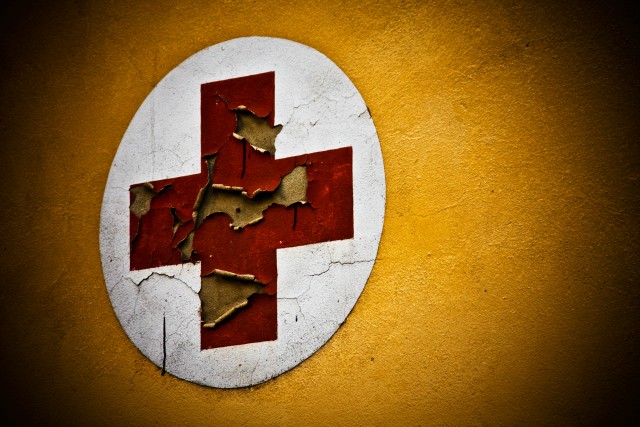
When a shaken Swiss businessman named Henry Dunant returned to Geneva from a business trip in July 1859, he was a different man than the one who had left six years previously. Just one month earlier he had witnessed firsthand the consequences of modern warfare.
On the battlefield of Solferino, 40,000 men, some dead, some in unbearable pain, lay on the floor, with no one to assist them. He built an improvised hospital and mobilized the local population to help the wounded, regardless of their side in the conflict. “Tutti Fratelli”, "All Brothers", was the expression of the day. The Red Cross was founded four years later, embodying this same spirit.
The origins of the Geneva Convention
Along with the Red Cross, Henry Dunant saw the need for a government treaty recognizing the organization's authority and legitimizing its work. Thus, 150 years ago this year, the representatives of 12 states gathered in Geneva to sign what came to be "the basis on which rest the rules of international law for the protection of the victims of armed conflicts.” The First Geneva Convention established principles such as the impartial reception and treatment of all combatants and the protection of civilians providing aid to the wounded, both unprecedented in international law. It was also the first legal document to recognize the authority of the International Committee of the Red Cross (ICRC), founded the previous year.
In 1906, the Second Geneva Convention extended these and other obligations to the naval armed forces. The Third Geneva Convention, ratified in 1929, focused on the rights of war prisoners. After the Second World War, there was a need to update these principles and so in 1949 a Fourth Convention (commonly known simply as The Geneva Convention) was added, revising and expanding the previous three and providing a new focus on the protection of civilians in times of war. In 1977 and 2005, three new Protocols served to amend the 1949 Convention on issues such as the protection of victims of international and non-international armed conflict.
Staying up-to-date
Why so many revisions, Conventions and Protocols? The main reason is the ever-changing nature of war. Modern warfare bears little similarity to 19th century confrontations. Weapons evolve and strategies change. Non-international conflicts, for example, have become more common than opposing nation-state armies confronting each other. It is unusual nowadays for the fighting to take place in a defined battlefield; it rather often occurs in populated areas, raising the number of civilian casualties exponentially. Sexual violence in war scenarios is also increasingly common and although many countries have already passed internal laws that criminalize rape, other attacks on someone’s sexual integrity are still not sufficiently prohibited by domestic legislation everywhere.
The importance of and need for a clear and updated international humanitarian law is greater than ever. This was also what the 14th Annual Southern Africa Regional Seminar on International Humanitarian Law concluded early in September this year. When asked whether the Geneva Conventions were still relevant today, the Head of the ICRC’s Pretoria Regional Delegation, Mr. Jürg Eglin, replied: “The answer is a clear yes. It is a matter of development and implementation of this body of law, and there we can make a difference.”
Recognition, at last
Henry Dunant did not have an easy life. He was relegated to a minor role in the movement that he himself had founded, was often involved in financial scandals and bankruptcy and suffered from depression and paranoia. The joint Noble Prize that he received in 1901, along with Frédéric Passy, did not diminish the fact that he lived in poverty for most of his life and died alone in a nursing home in Zurich. He was even buried without a ceremony. Still, earlier this month, Swiss Federal President Mr. Didier Burkhalter renamed the second highest peak in Switzerland after him. It is now called Dunantspitze (Peak Dunant), a fair tribute to a visionary, a man who dedicated his life to making the dark side of human nature a little bit more human.
Today, 196 countries are parties of the Geneva Convention, and the Red Cross has gained an unparalleled status in the world. Like almost all great human achievements, the route of international humanitarian law was paved with battles and peaks from its very beginning.
Sources :
https://www.icrc.org/en/document/geneva-conventions-150-years-later-still-relevant#.VE5SxVe9X3R
http://en.wikipedia.org/wiki/Henry_Dunant
Photo credit: 96dpi via photopin cc






Its amazing how after all these years his work still remains relevant. War is part of human history and future and it is good to have someone think of the humans behind the war and not just take it forgranted that everyone is taken care of.